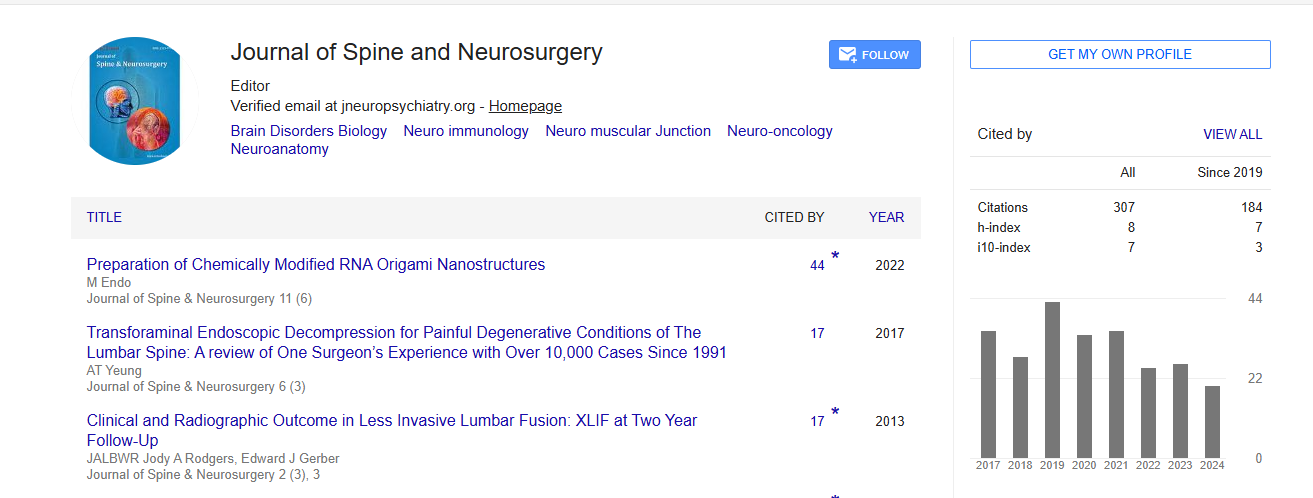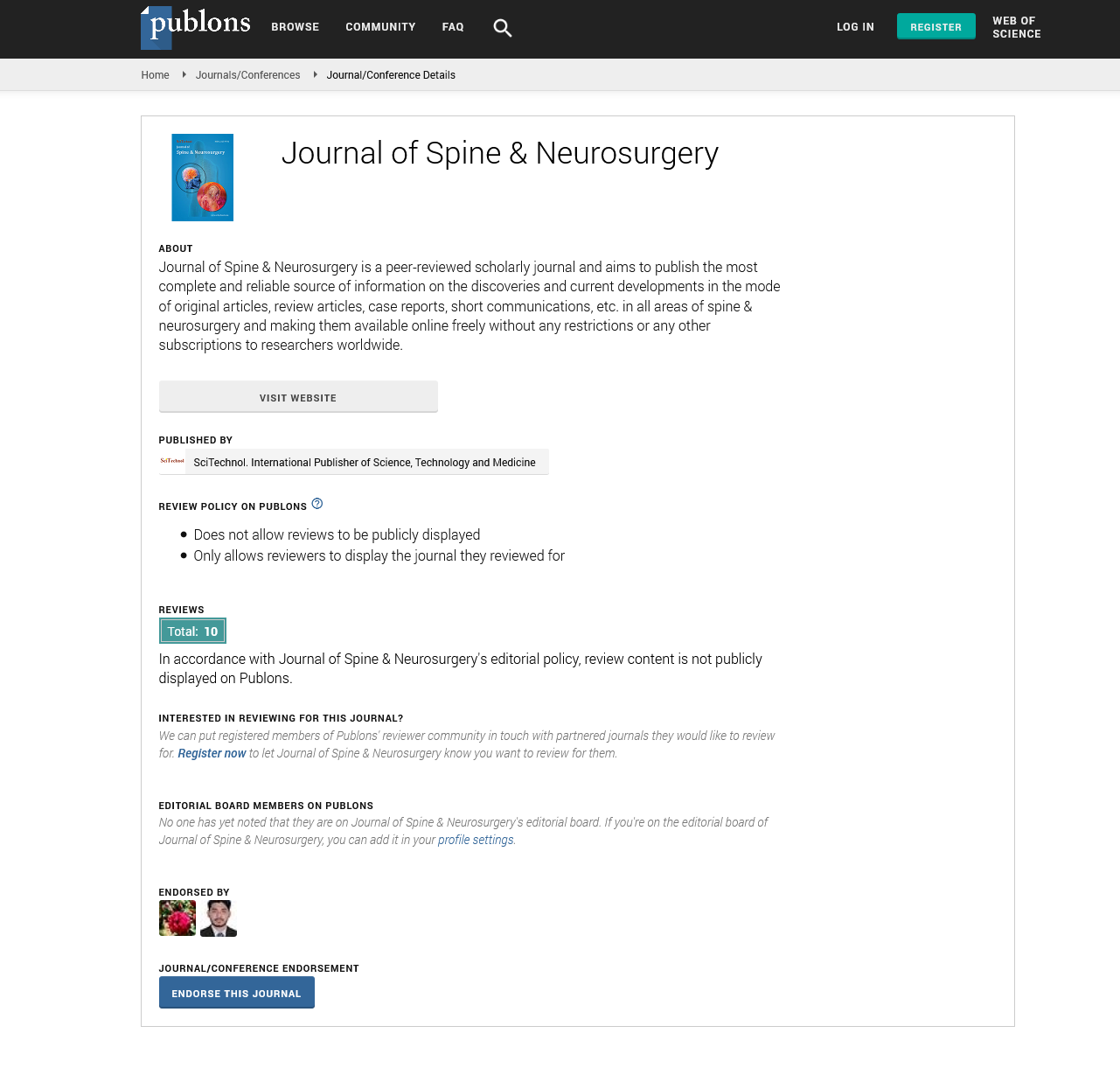Optimizing RUL rTMS protocols - Is more treatment better?
H. Ford, B. Carnell, P. Clarke, S. Gill and C. Galletly
Alfred Health, Australia
The Adelaide Clinic, Australia
The Adelaide Clinic, Australia
University of Adelaide, Australia
Ramsay Health Care, Australia
Northern Adelaide Local Health Network, Australia
: J Spine Neurosurg
Abstract
Background: Repetitive Transcranial Magnetic Stimulation (rTMS) has been proven to be a safe and effective treatment for Major Depressive Disorder (MDD). While there is similar antidepressant efficacy reported between bilateral, right unilateral and left unilateral treatments, studies have demonstrated advantages to right unilateral treatment (RUL) with regards to safety and tolerability. However, the RUL rTMS protocol is not yet defined. Objectives: To define the optimal RUL rTMS treatment protocol by exploring the effects of extended rTMS sessions on response rate in treating treatment-resistant depression (TRD). Methods: The study was conducted in a naturalistic setting comparing two first-time patient groups treated with low frequency (1Hz) RUL rTMS for TRD 3 days/week over 6 weeks. All participants received rTMS 3 days/ week for 6 weeks (18 treatments in total). 78 patients received standard 15 minute low frequency RUL rTMS treatment sessions (total rTMS time 270 minutes) and 71 patients received extended low frequency RUL rTMS 30 minute treatment sessions (total rTMS time 540 minutes). All groups were assessed at baseline, mid-treatment and end of treatment. Response and remission rates were compared at mid-treatment (3 weeks [9 sessions]) and end of treatment (6 weeks [18 sessions]) for participants receiving 30 minutes of rTMS treatment. At mid-point these participants would have received a total of 270 minutes of rTMS treatment, and at the end of treatment 540 minutes in total. Findings: No significant differences in remission or response rates were demonstrated between the patient group receiving standard RUL rTMS and those receiving extended RUL rTMS over 6 weeks. Mid-treatment assessment of patients receiving extended RUL rTMS (total rTMS time 270minutes) showed significantly lower remission and response rates in comparison to the currently accepted RUL rTMS protocol of 270 minutes administered in 18 x 15 minute sessions over 6 weeks. Conclusions: The findings suggest the standard RUL rTMS protocol of 18 x 15 minute sessions is sufficient for the management of TRD. Condensing the standard total rTMS treatment of 270 minutes into 9 x 30 sessions over 3 weeks in comparison with the currently accepted protocol of 18 x 15 sessions over 6 weeks showed significantly lower rates of response and remission, suggesting spacing of rTMS sessions is needed for optimal treatment.
 Spanish
Spanish  Chinese
Chinese  Russian
Russian  German
German  French
French  Japanese
Japanese  Portuguese
Portuguese  Hindi
Hindi 
